Dense Breast Tissue
Dense breast tissue can make it more difficult to diagnose breast cancer early in women. Also, women with dense breasts have a higher risk of developing breast cancer. A mammogram can determine if you have dense breast tissue, giving you and your doctor the information needed to make decisions about your breast health.
Learn About Your Breast Density:
Schedule a Mammogram Today
An annual mammogram screening is the best way to detect cancer early, when it is easiest to treat. Use our convenient online scheduling tool to book your mammogram appointment today or call 216-844-2778.
What is Dense Breast Tissue?
Breasts are made up of a mixture of fibrous and glandular tissue and fatty tissues. A woman’s breasts are considered dense if she has a lot of fibrous or glandular tissue, but not much fat. Density may decrease with age, but there is little, if any, change in most women.
Radiologists classify breast density using a four-level density scale, as determined by a mammogram:
- Category A: Almost entirely fatty
- Category B: Scattered areas of dense breast tissue
- Category C: Heterogeneously dense
- Category D: Extremely dense
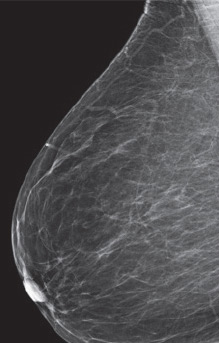
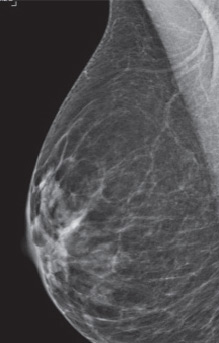
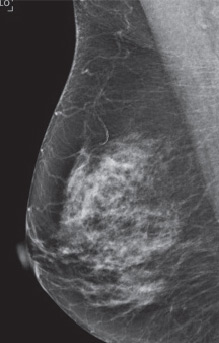
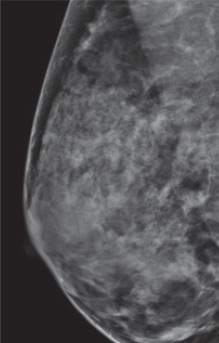
In the U.S., breast density is distributed as follows:
- 10 percent of women have almost entirely fatty breasts
- 10 percent have extremely dense breasts
- 80 percent are classified into one of the two middle categories
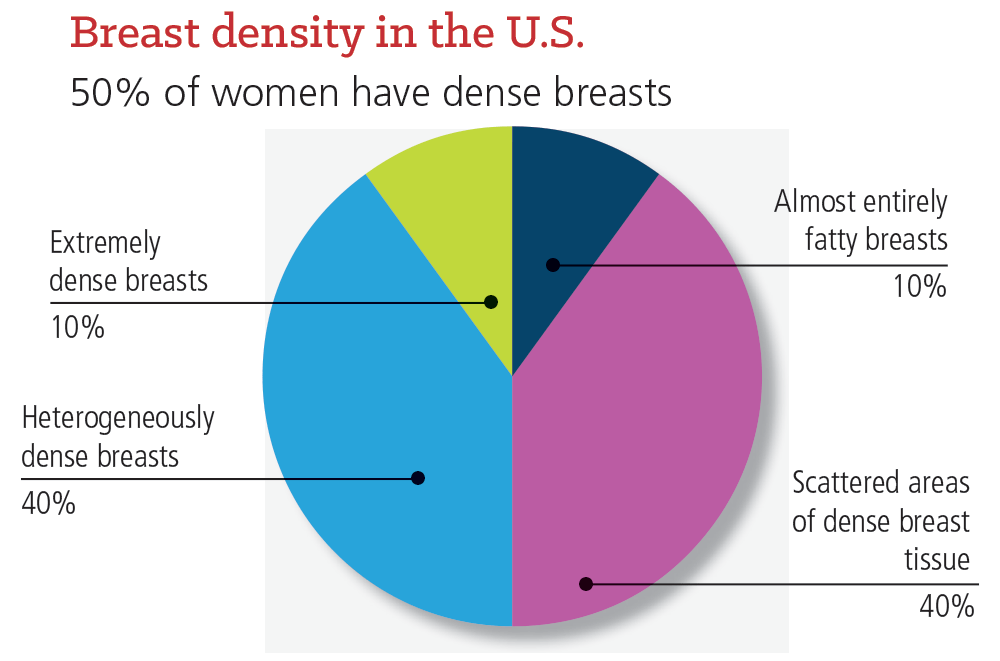
Why Is Dense Breast Tissue Important?
Having dense breast tissue may increase your chance of getting breast cancer. Dense breasts also make it more difficult for doctors to spot cancer on mammograms. Dense tissue appears white on a mammogram; lumps, both benign and cancerous, also appear white. So mammograms can be less accurate in women with dense breast tissue.
Determining Breast Density
Dense breast tissue is determined by the radiologist who reads a mammogram. The radiologist assigns each mammogram to one of the four categories of breast density. If your mammogram shows that you have heterogeneously dense or extremely dense breast tissue, you will receive a letter notifying you that you have dense breasts. You can speak to your primary care physician about your risk and your breast cancer screening options.
Mammograms and Other Tests for Dense Breasts
Women with dense breasts should continue to receive a mammogram every year. Even though it may be harder to detect, a mammogram is still the best way to detect breast cancer in dense breasts. Additional tests if needed, may include:
- Tomosynthesis (3-D mammography)
- Breast ultrasound
- Breast magnetic resonance imaging (MRI)
Learn About Your Breast Density: Schedule a Mammogram Today
An annual mammogram screening is the best way to detect cancer early, when it is easiest to treat. Use our convenient online scheduling tool to book your mammogram appointment today or call 216-844-2778.


